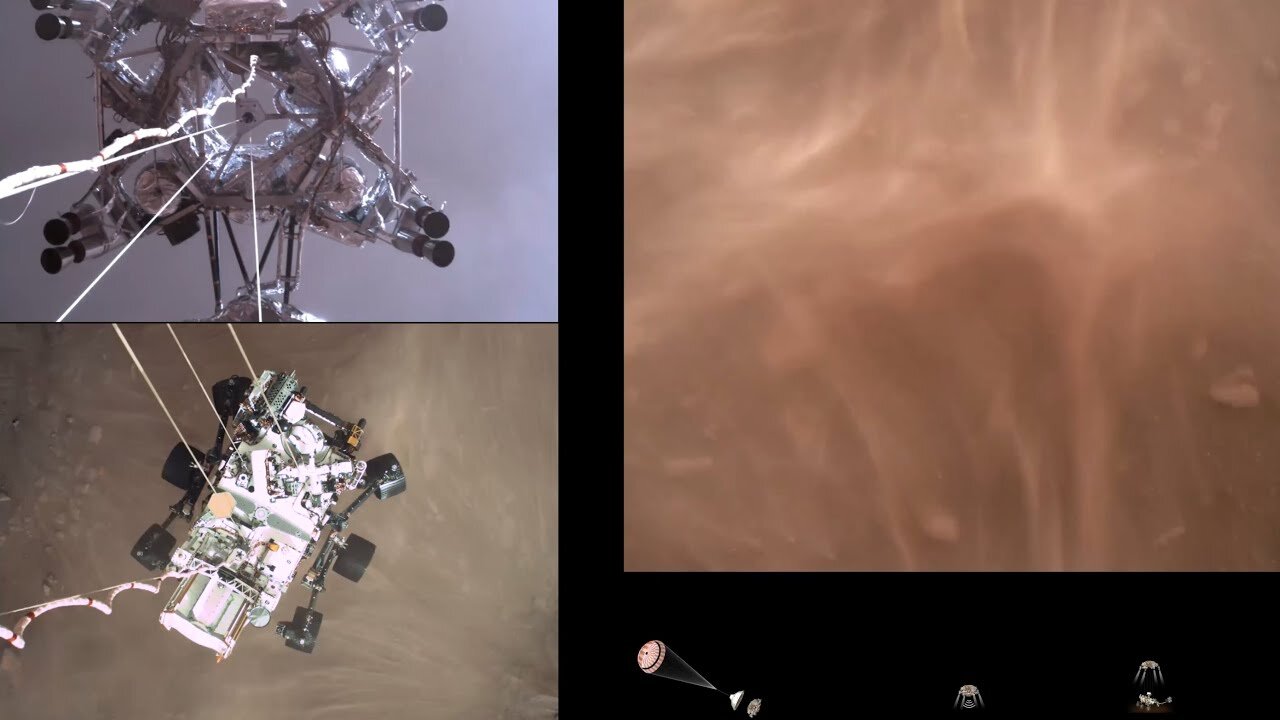Premium Only Content

Perseverance Rovers Descent and Touchdown on Mars Official NASA Video
The Perseverance rover's descent and touchdown on Mars was a complex and thrilling process that took place on February 18, 2021. Here's an overview of the key steps involved in the descent and landing of the Perseverance rover:
1. Entry, Descent, and Landing (EDL): The process began with the spacecraft's entry into the Martian atmosphere, which is often referred to as the "seven minutes of terror." At this stage, Perseverance was traveling at a high speed and needed to slow down significantly to land safely. The EDL phase included several critical steps:
a. Atmospheric Entry: The spacecraft entered the Martian atmosphere at a speed of about 12,100 miles per hour (19,500 kilometers per hour).
b. Heat Shield: The spacecraft's heat shield protected it from the intense heat generated during atmospheric entry. Friction with the Martian atmosphere slowed the spacecraft down.
c. Parachute Deployment: At a specific altitude and velocity, the spacecraft deployed its supersonic parachute to slow down further. This was a crucial step in reducing its speed.
d. Terrain-Relative Navigation: Perseverance used advanced onboard navigation systems to identify and target a safe landing site during its descent. This allowed for a precision landing.
e. Powered Descent: The spacecraft separated from its backshell and parachute, and a powered descent system was used to control its final approach to the Martian surface.
f. Sky Crane Maneuver: The rover was attached to a sky crane, which used retrorockets to slow its descent. This was a novel and innovative approach to safely lower the rover to the surface.
2. Touchdown: Perseverance was gently lowered to the Martian surface by the sky crane. The rover's wheels made contact with the surface, and the descent stage, which was no longer needed, flew a safe distance away and crash-landed.
3. Post-Landing Activities: After a successful touchdown, Perseverance initiated its post-landing activities. These included checking its systems, deploying its mast, and conducting various instrument checks. It also began sending images and data back to Earth.
The entire descent and landing process was executed autonomously because of the time delay in communicating with Earth. This sequence of events was meticulously planned and relied on a combination of advanced technologies, including autonomous navigation, precision landing techniques, and the innovative sky crane maneuver.
The Perseverance rover landed in Jezero Crater, a location chosen for its potential to have once hosted a lake and preserved ancient microbial life. Since its landing, Perseverance has been exploring the Martian surface, conducting scientific experiments, and preparing for its primary mission, which involves searching for signs of past life and collecting rock and soil samples for future return to Earth.
-
 9:39
9:39
MattMorseTV
2 hours ago $0.01 earnedVance just DROPPED a BOMBSHELL.
77915 -
 1:47:49
1:47:49
Jeff Ahern
2 hours ago $0.13 earnedThe Sunday Show!
78.9K3 -
 LIVE
LIVE
Spartan
1 hour agoExpedition 33, Halo Later on (Maybe)
96 watching -
 LIVE
LIVE
Meisters of Madness
35 minutes agoFinals and Wuchang!
55 watching -
 LIVE
LIVE
Lofi Girl
2 years agoSynthwave Radio 🌌 - beats to chill/game to
289 watching -
 LIVE
LIVE
BBQPenguin_
2 hours agoTasking & PVP
42 watching -
 LIVE
LIVE
FrizzleMcDizzle
3 hours agoGladius, Creature of the Night - NEW NIGHTLORD - NightReign
17 watching -
 8:31
8:31
MattMorseTV
1 day ago $1.48 earnedTexas just did the IMPOSSIBLE.
64.1K88 -

Rotella Games
19 hours agoGreen Hell Day 6 | We Have a LONG Way to Go
12.8K4 -
 41:26
41:26
The Mel K Show
6 hours agoMel K & Clay Clark | Financial Success Hides Behind Self Discipline: Five Pillars | 8-24-25
31.9K3